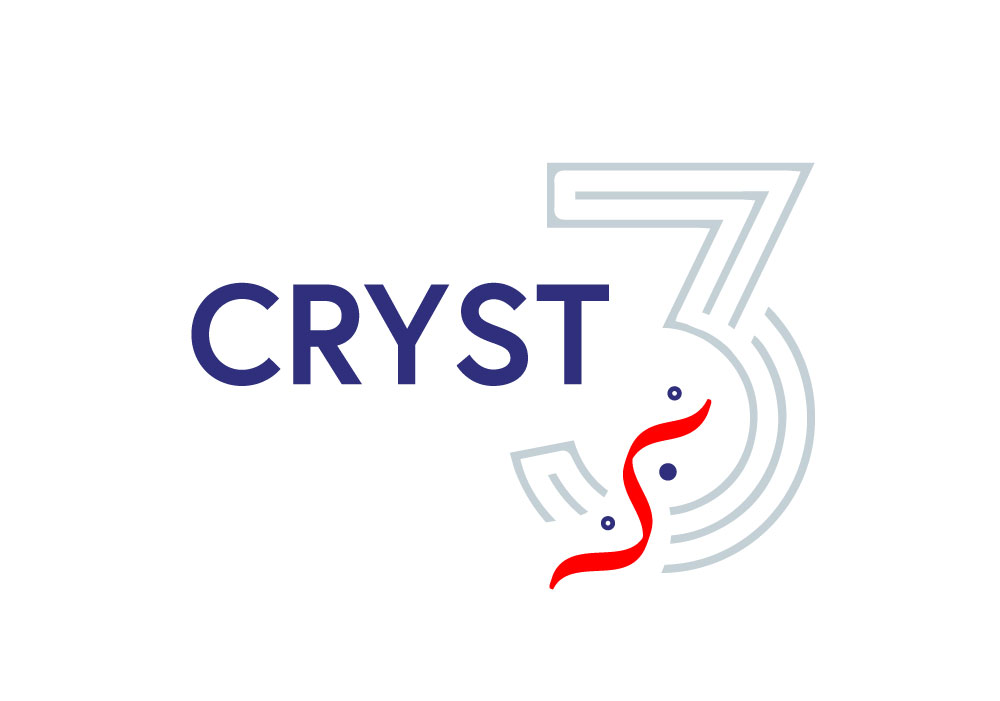Project presentation
Project subject
All automated systems require sensing of the surrounding environment. The rising relevance of artificial intelligence in society demands sensors that are accurate, light-weight, cheap and robust.
Among the best laboratory sensors - including clocks, accelerometers, gyroscopes…- , those based on individual atoms stand out for their phenomenal stability and accuracy, but most are bulky and fragile and nearly all are expensive. CRYST^3 envisions a future technology where the core element, the sensor head containing the atoms, is greatly reduced in size and cost, and made more robust and more suitable for industrialization. The project will deliver the seminal contribution of a novel material where individual alkali atoms at microkelvin temperatures are encapsulated in the hollow core of a photonic crystal optical fiber, fully functional hermetically sealed and integrated with light sources. In this novel material, we expect novel physical phenomena: such as atoms acquiring long-range interactions that are mediated by the light field and tailored through the design of the fiber; spontaneous spatial ordering of the atoms, akin to crystallization and collective light scattering by the atoms in the form of superradiant emission.

CRYST^3 will generate the first prototype of the novel material, fully operational and customized, from numerical design, manufacturing, post-processing and testing, to industrialization assessment by a leading photonics company.
The technological advancements will be intertwined with theoretical analysis and experimental demonstrations of novel loading, trapping and cooling techniques to create a large sample of ultracold atoms in a hollow-core fiber, which will serve as the platform for the scientific breakthroughs of:
1 - cooling the atoms inside the fiber,
2 - observing their emergent self-ordering
3 - detecting the superradiant properties of the emitted light.
CRYST^3 at a glance
• A new field of intersection of photonics, cold atoms and QED*
• A photonic platform for cold-atoms science and technology
• An industrialized prototype of a photonic-crystal optical fiber filled with alkali atoms
CRYST^3 targets both scientific (in-fiber cooling, self-ordering and SR in atom filled HCPCF*) and technological breakthroughs (tailored and functionalized
HCPCF, alkali-atom PMC*), requiring an efficient synchronization of several diverse activities shared among the Partners.
The work program is structured around three poles of activity segments; identified by separate WPs . The first Design and Technology Pole (WP1) entails the development of the technology building blocks, tailored and functionalized HCPCF, to achieve the first all-fiber alkali atom PMC and its scale-up for industrial use. The second, Science and Technology Pole (WP2), focuses on the micro-confinement of cold atoms, building experimental schemes for atom loading, trapping and cooling. The third, Seminal and Frontier Science Pole (WP3), targets the experimental observation of seminal science: in-fiber atom trapping and cooling, atomic self-ordering and superradiant light emission. Furthermore, to ensure a smooth execution of the above plan, a Management structure will be put in place (WP4), and to accelerate both the results dissemination and market adoption, a dedicated WP to manage the project Dissemination and Exploitation (WP5).

Acronym
- PMC: Photonic Micro Cell
QED: Quantum ElectroDynamics
HCPCF: Hollow Core Photonic Crystal Fiber
Work package
HCPCF - Design, Supply and Post-processing
Supply HCPCFs* for the different WPs. Design and fabrication of atom-photonic specific HCPCF. Post-processing of solid fiber ends for mode matching with HCPCF. Splicing HCPCF with solid fiber with ultralow loss and ultralow back-reflection. Assembly process of alkali vapor PMC*. Investigate and overcome limitations for scaling up the alkali vapor PMC assembly process for industrial production.
Cold Atoms in HCPCF
Theoretical description of photon scattering in multimode fibers, and of the near-surface field local distribution; simulation of loading techniques, in-fiber laser cooling; prepare complementary experimental setups; loading and in-fiber transverse cooling techniques; in-fiber atom trapping; in-fiber loading or generation of a Rb BEC*; laser cooling of a PMC.
Emergent Physics in HCPCF
Self-ordering induced by longitudinal or transverse pump on a scalar BEC; two-component BEC and spin ordering in a HCPCF; engineering of in-fiber long range atomic interactions; investigate transverse self-ordering in the HCPCF; characterize superradiant emission from atoms in HCPCF; study emergent gauge fields in HCPCF; assess fundamental and industrial applications.
Management
Structure, manage and monitor project progress; guarantee seamless interactions between the Consortium and the EC*; coordinate materials, results, and information exchange among partners; prepare and submit periodic reports and deliverables; assist and support partners in financial and administrative matters.
Dissemination and exploitation
Communication: establish secure file exchange system; set-up external communication actions through a website, online videos and news; Dissemination of the obtained results through published articles, participation at conferences and fairs. Exploitation: identify paths for value creation through market and scientific studies, and exploitation plans.
Acronym
- PMC: Photonic Micro Cell
Rb BEC: Rubidium Bose-Einstein Condensate
HCPCF: Hollow Core Photonic Crystal Fiber
EC: European Commission